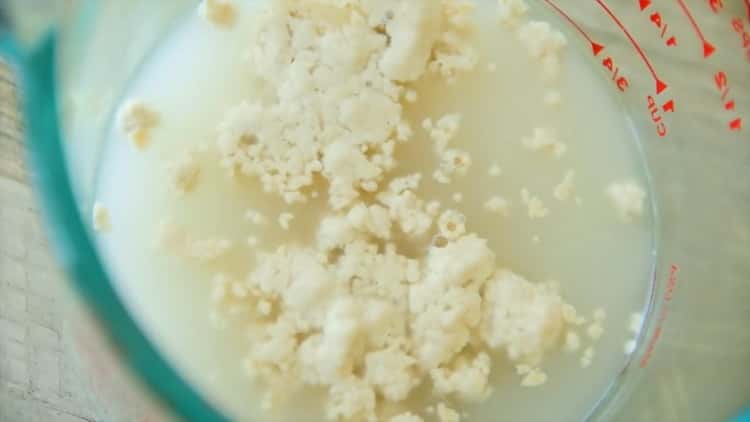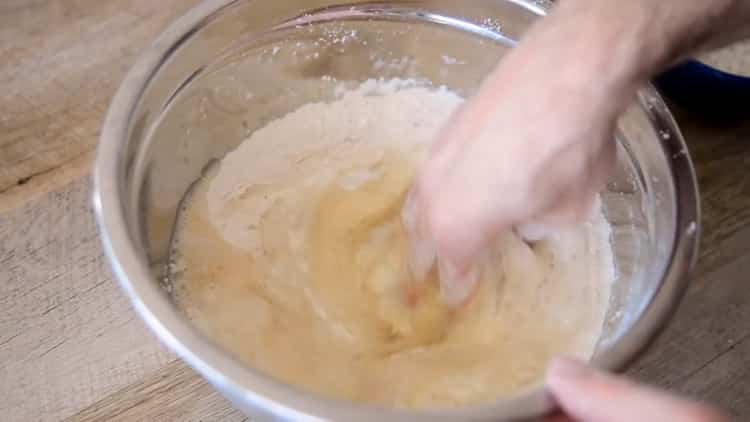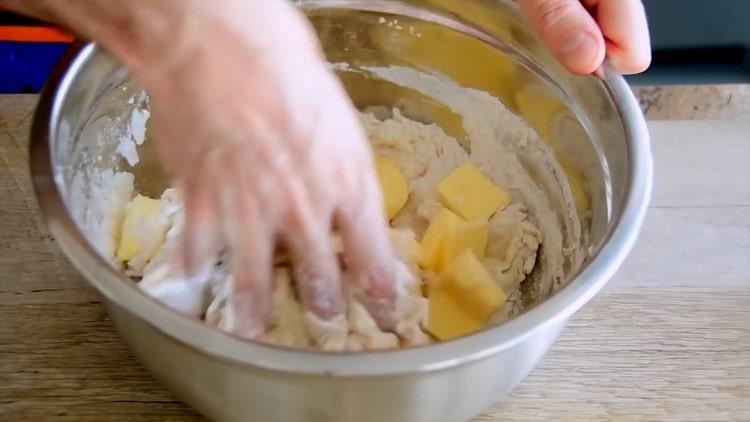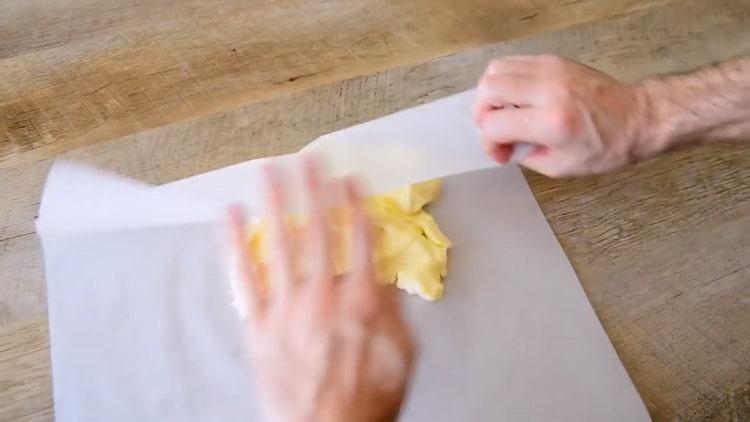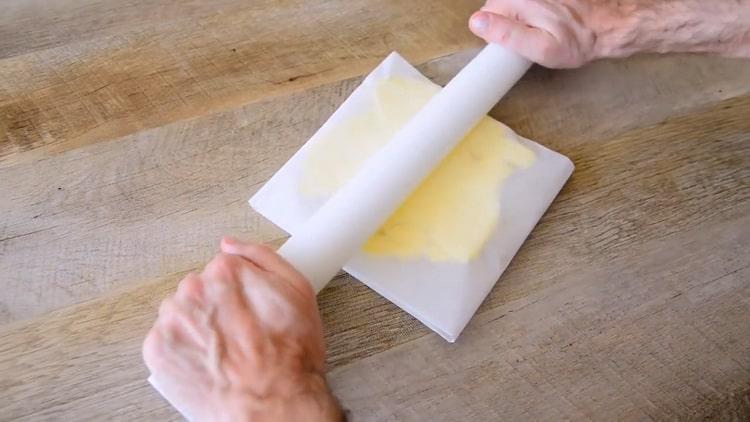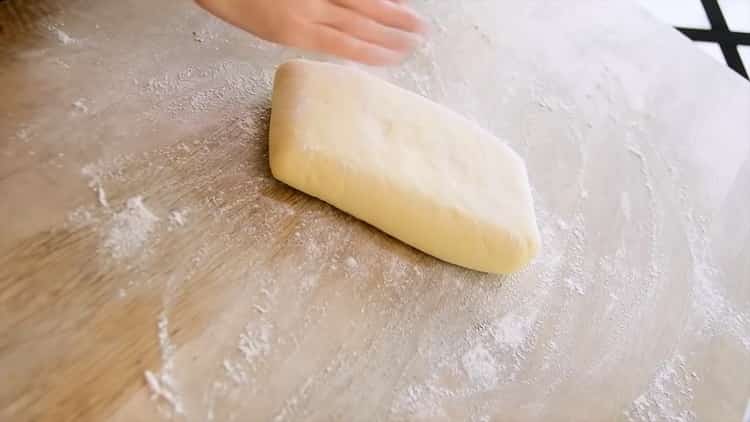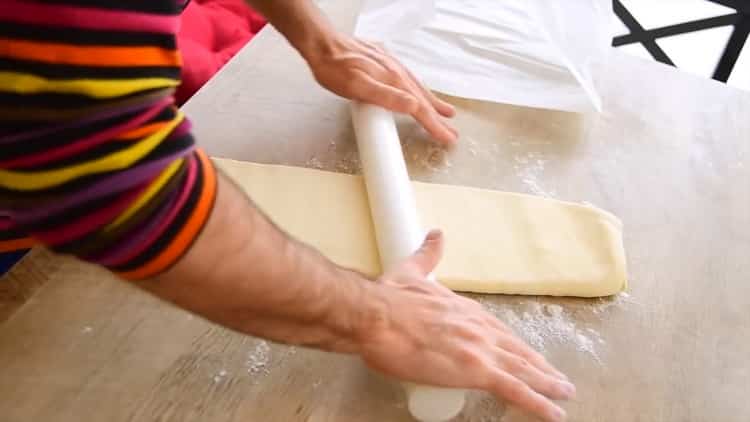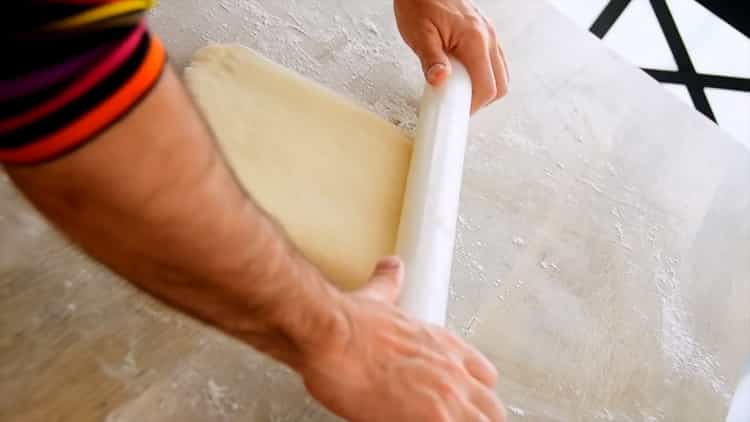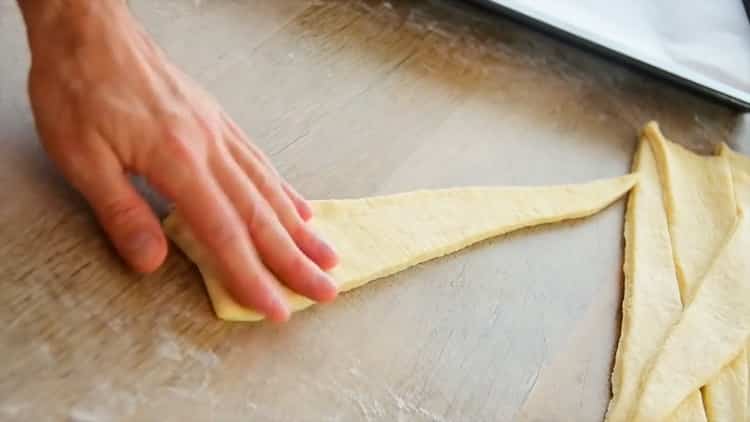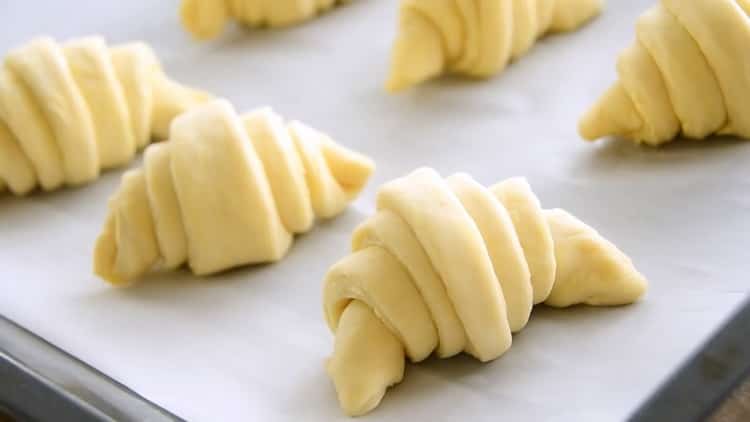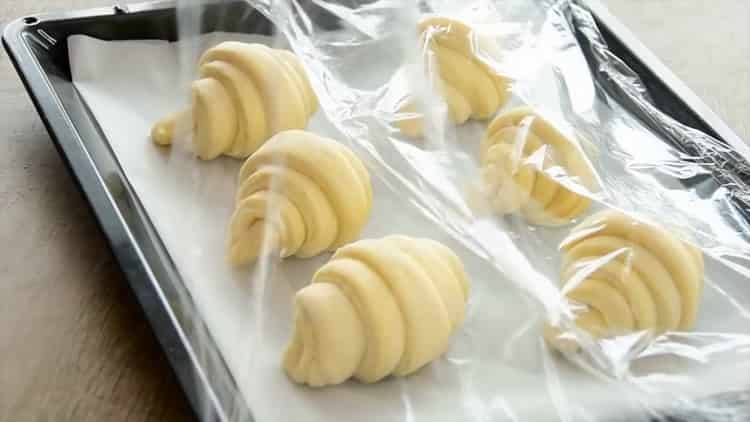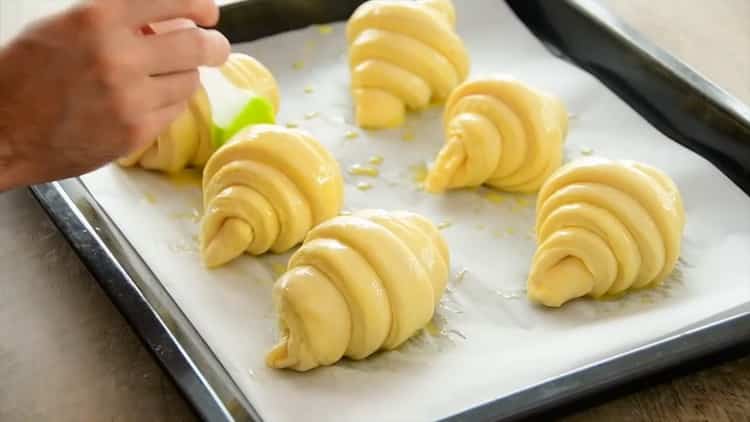Kitchen appliances and utensils: gas or electric oven, stove or frying top, deep container, refrigerator, deep bowl, tablespoon, cling film, rolling pin, knife, fork, 0.5 l pan, measuring cup, kitchen scale, parchment paper, silicone brush, wire rack , baking sheet, dessert plate.
Ingredients
| Water | 150 ml |
| Salt | 12 g |
| Flour | 500 g + 2.5 tbsp. l |
| Room temperature butter | 350 g |
| Milk | 100 ml |
| Sugar | 55 g + 2 pinches |
| Dry yeast | 12 g |
| Egg | 1 PC. |
Step cooking
Dough
- Pour 150 ml of water into a 0.5 l pan and heat over high heat until warm. Pour warm water into a deep bowl, add 2 pinches of sugar and 12 g of dry yeast, mix with a tablespoon until the yeast dissolves and leave for 10 minutes.

- Pour 500 g of flour, 55 g of sugar and 12 g of salt into a deep container, mix by hand and make a deepening in the middle.

- Pour 100 ml of milk into a pan of 0.5 l and heat over low heat until warm. When 10 minutes have passed, pour the yeast and warm milk into the recess in the flour mixture, and in a circular motion begin to introduce the flour, collecting it from the edges.

- When the whole flour interferes, add 100 g of butter, cut into pieces, and knead the dough until it stops sticking to the container. We spread the dough on the work surface and knead, periodically as if dropping it from a small height onto the table until it becomes homogeneous and smooth. We form a thick layer of rectangular shape from the dough, wrap it in a film and place it in the refrigerator for at least 4 hours.

- We spread a piece of parchment paper on the working surface, spread 250 g of butter in the middle and flatten it with a hand into a cake about 1 cm thick.

- Fold the paper with an envelope measuring 20 × 20 cm and, gently pressing and rolling with a rolling pin, form a layer of oil inside, filling it with all the voids. We put the resulting layer of oil in the refrigerator.

- After 4 hours, we take out the dough and a layer of oil from the refrigerator, and leave them for 10 minutes. Sprinkle the working surface of 1 tbsp. l flour, put the dough on it, slightly sprinkle it with flour on top, shake off the excess, and roll out the dough with a rolling pin into a rectangle 2 times the size of the oil layer. We spread a layer of oil on one half of the dough and cover it with the second half of the dough, as if sealing it. Again, sprinkle the dough on top of the flour from the work surface, shake off the excess with your hand. Press the rolling pin above and below, sealing the dough, and then, pressing the rolling pin on the rest of the surface in the middle, print the rest of the dough with butter.

- Then we put the rolling pin in the middle and roll it down towards ourselves, then from the middle we roll the layer up with the rolling pin, keeping the elongated rectangular shape.

- We bend the dough from above, covering it 1/3, and then from below, covering already 2/3 of the layer, and roll it out a little with a rolling pin. Fold our layer in half, press it a little with your hands, wrap it in film and put it in the refrigerator for 1 hour. After an hour, we take out the dough from the refrigerator, sprinkle a working surface of 0.5 tbsp. l flour and put on it a layer. We roll out the layer, trying to maintain its shape and make it the same thickness of 1 cm.We bend 1/3 of the dough and cover it with the opposite 1/3 of the part, flatten it a little with your hands, wrap it in cling film and place in the refrigerator for 1 hour.

Croissants
- After 1 hour, we take out the dough from the refrigerator and put it on a work surface sprinkled with 1 tbsp. l flour. Sprinkle the layer on top of the flour from the working surface, shake off the excess and gently roll the dough into a layer measuring 28 × 64 cm and a thickness of 4 mm. We cut the edges with a knife so that the layer is of the correct rectangular shape. Carefully cut the dough into 12 equal triangles.

- We cover the baking sheet with a sheet of parchment. We take the triangle of dough, flatten the base a little, make a small cut in the middle and, holding the corners of the base, twist the dough, forming the future croissant. We press the tail a little, bend the product a little with an arc and put it on a baking sheet. Do the same with the other triangles, and put them on a baking sheet at a distance from each other.

- Loosely cover the baking sheet with cling film, trying not to pin down the product, and leave to rise at room temperature for 1-1.5 hours, so that they double.

- After 1-1.5 hours, turn on the oven at 200 ° C and leave it to warm. Remove the film from the croissants, break 1 egg into a deep bowl, beat it with a fork and grease it with the product on top with a brush.

- We put the baking sheet with croissants in a preheated oven for 10 minutes, then lower the temperature to 185-190 ° C and bake another 10-12 minutes until golden brown. We take ready-made pastries from the oven, let stand on the baking sheet for a bit and transfer to the wire rack to allow them to cool. We spread a little warm croissant on a dessert plate and serve.

Important! To make croissants more airy, it is better to sift the flour twice through a sieve so that it is saturated with oxygen.
Video recipe
To clarify the principles of rolling out the dough or forming croissants, it is worth watching a video recipe.

